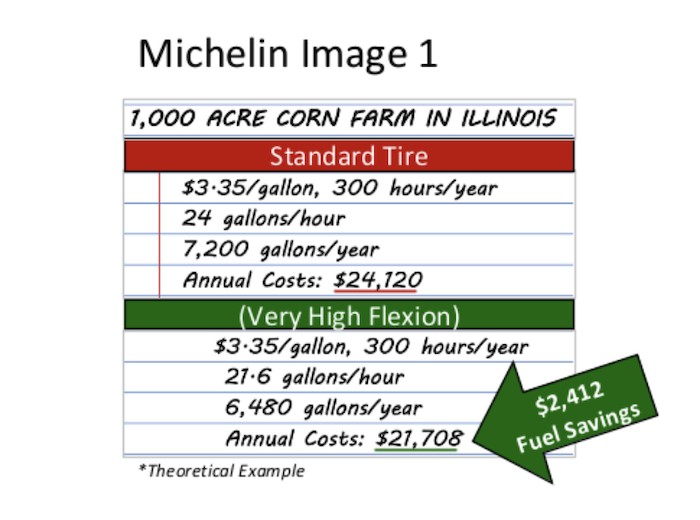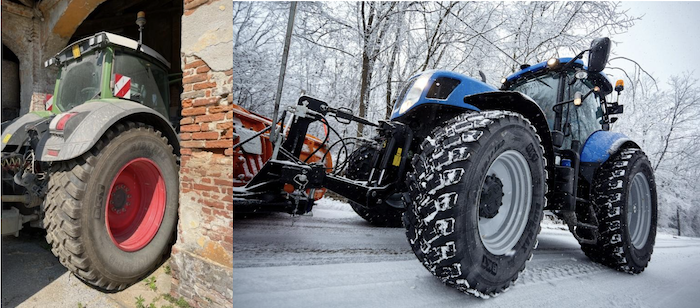A bulletin from Michigan State University Extension estimates that poor tractor performance wastes 150 million gallons of fuel each year in the United States alone. Solution
One of the easiest ways to make significant impacts in adding fuel efficiency is maintaining optimal tire pressures.Ross Ormsby, from Doran Manufacturing says: Rolling Resistance Impact
Roughly 30-40% of the fuel required to move a vehicle down the road is spent overcoming tires rolling resistance.Chris Neidert from Trelleborg Wheel Systems says: Central Tire Inflation Systems HIGHLY RECOMMENDED
As tire professionals, in most ag tire applications, we recommend the ideal environment for an ag tire is one air pressure (lower) in the field and another air pressure (higher) on the road. Central Tire Inflation Systems (CTIS) can provide this option. Running multiple air pressures can provide many benefits – bigger footprint in the field for less compaction – more tread on the ground for more traction – more tread on the ground for better wear and a smoother ride. On the road, a more stable tire for handling and better road wear.David Graden from Michelin Ag says: VF Technology
VF tires are designed to carry same weight at 40% less air pressure. Less slip translates to improved productivity and, therefore, less fuel is consumed to do the job. In fact, independent studies at Harper Adams University in the UK show fuel consumption can be reduced by 10% simply by changing to VF Tires, as shown in below example:

Most tractors have an onboard slip meter to measure the amount of tire slippage that impacts the utilization of the tractor and the resultant fuel consumption by managing the optimal slip rate. Optimized tractor slip rates will reduce fuel consumption per below guidelines:· 2WD Tractors = from 10% up to 15% Slip Rate· MFWD Tractors = from 8% up to 12% Slip Rate· 4WD Tractors = from 8% up to 10% Slip RateDave Paulk from BKT USA, Inc .says: Lower Rolling Resistance Hybrid
Several hybrid tread designs have been introduced into the market in the past few years. They will deliver better fuel economy on the highway as they are made to have less rolling resistance.The hybrid designs are gentler on the ground as they have more of an R-3 design than an R-1 or R- 1W bar design.

Adding liquid ballast to tires increases the maximum amount of draft a tractor can exert, but it can reduce fuel efficiency in some situations when compared to using wheel weights. This is due to the stiffening effect of the liquid on the tire’s carcass, which causes it to deflect less and results in a smaller footprint. The smaller footprint translates to less lug surface area available to develop tractive force. Moving away from liquid ballast, and calcium chloride, for example, also removes the chance for corrosion of the tire rims, which would eventually necessitate tire replacement.All information has been provided solely to provoke thought. All deductions made from information provided must be confirmed by Certified Ag Tire Dealer and tire manufacturer before use. Tire service work should only be conducted by Certified Ag Tire Dealer Professionals.
Related Content:
Tire Difference: Comparing Sprayer vs. Tractor,Choosing Best Tire Construction for Application,
Improving Carbon Sequestration with Tire Selection and Air Pressure






